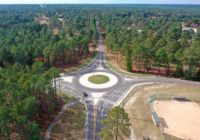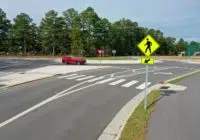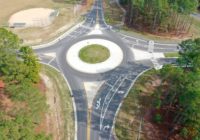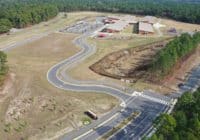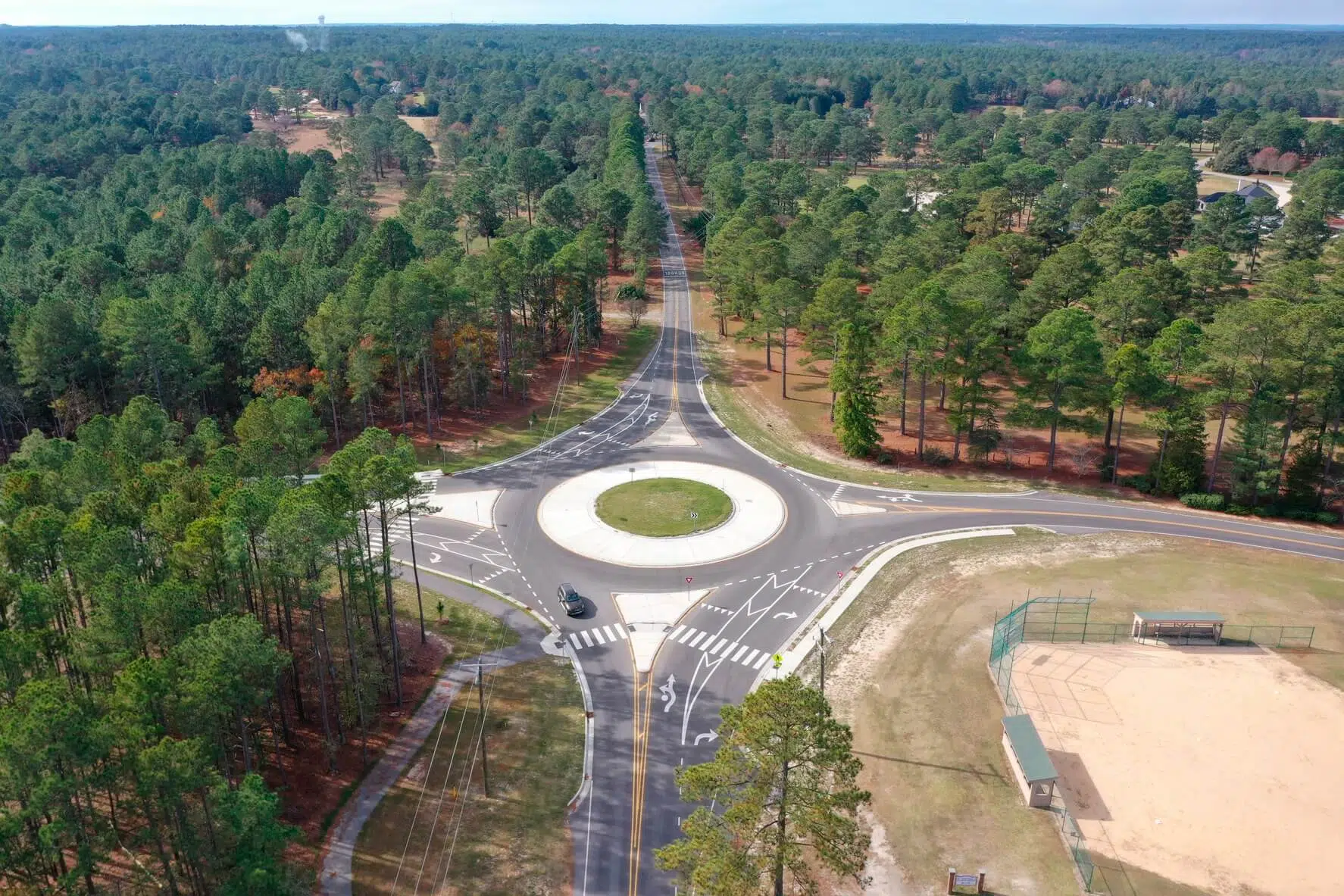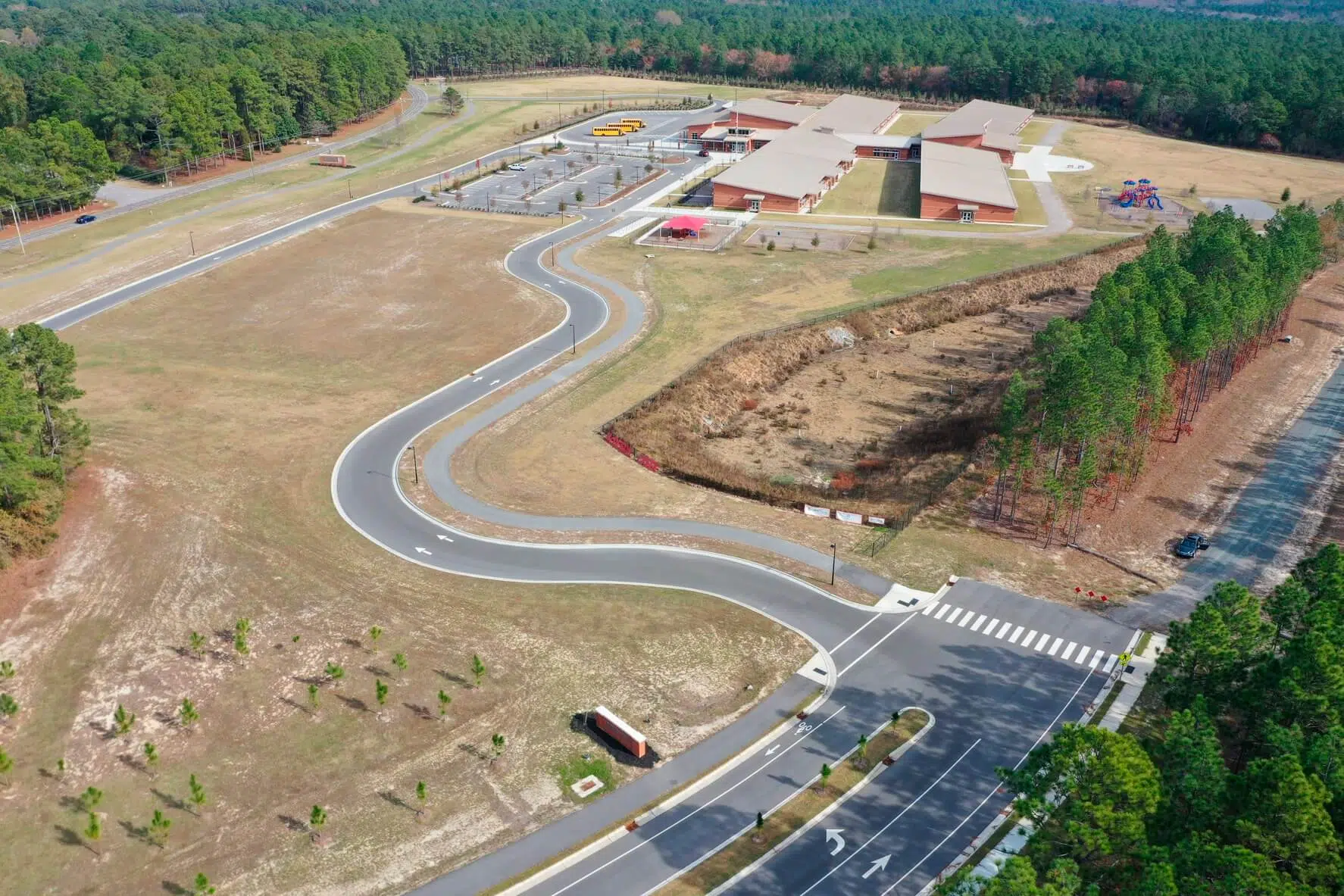Moore County Schools Roundabout Design and Stormwater Treatment Plan
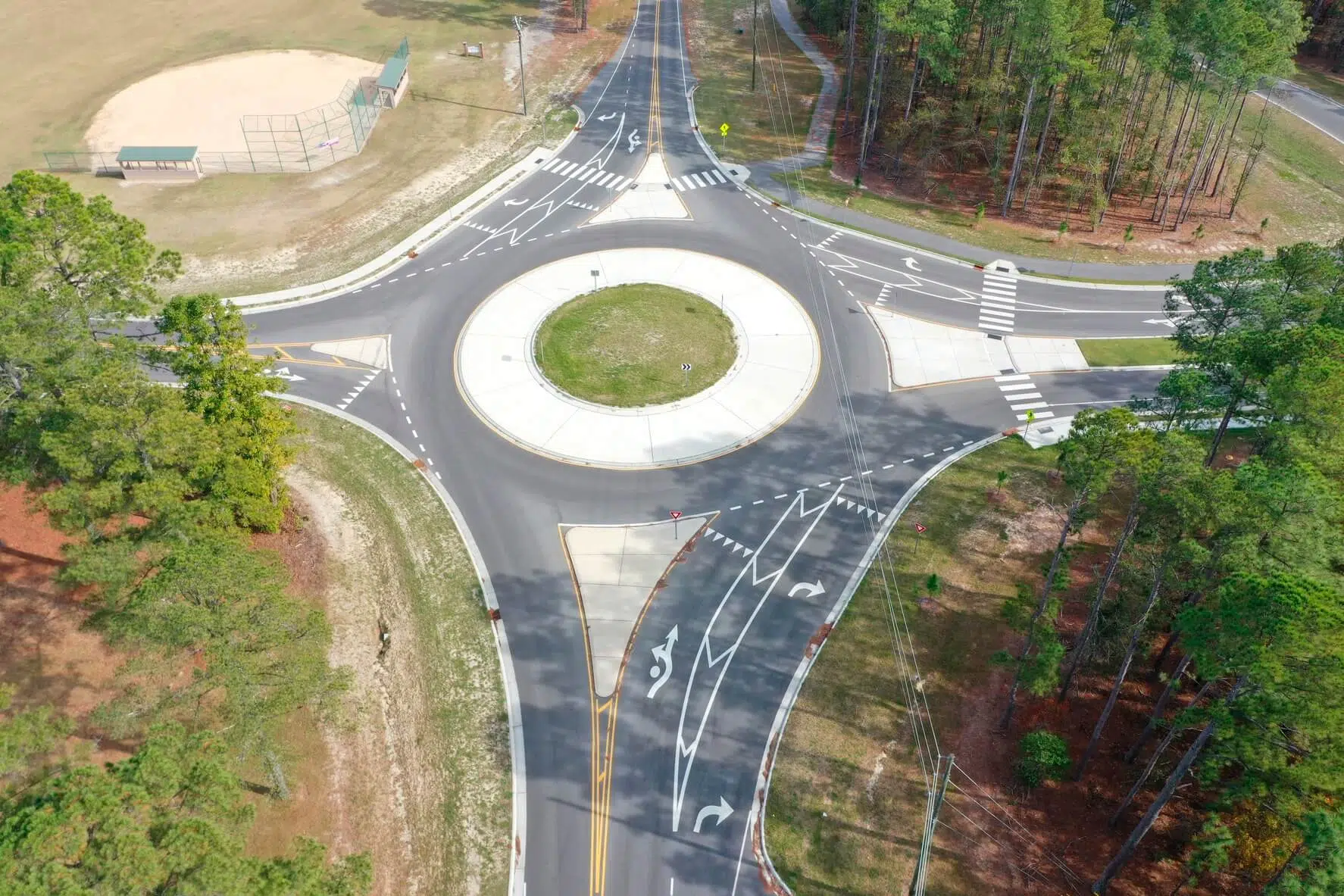
As part of an agreement partnering Moore County Schools, Kimley-Horn provided design and engineering services for a roundabout with multi-lane approaches and improvements for two intersections along Camp Easter Road. These improvements increase pedestrian and vehicle safety, and create an efficient flow of traffic for two adjacent schools in different school systems.
Project Overview
Kimley-Horn provided project coordination, design, environmental permitting, traffic management, signing and delineation, and private utility coordination for Moore County Schools. Intersection and roadway improvements included a 300-foot westbound left-turn lane, a 300-foot eastbound left-turn lane, and a 175-foot southbound right-turn lane to ease the flow of traffic at the existing high-congestion intersection.
McDeeds Creek Elementary, a large addition to Moore County, was constructed across from the John Paul II Catholic School, which resulted in increased traffic during drop-off and pick-up times, potentially causing backups along NC 22 and Camp Easter Road. The roundabout was implemented in conjunction with the new school construction to improve the flow of traffic and allow for pedestrian safety and accessibility to both schools. Additionally, the roundabout’s location within the Cape Fear River basin required the design of a Low Impact Development (LID) to mimic natural stormwater runoff and decrease the chance of flooding.
Roundabout Design
The design phase began with estimating probable construction costs for all three intersection improvements. A conceptual horizontal layout of the complex roundabout was created to estimate edge of pavement and right-of-way.
The roundabout was sized to meet North Carolina Department of Transportation standards and designed to accommodate future sidewalks on all four quadrants. Multi-lane approaches were implemented on three of the four legs of the intersection in order to balance and mitigate the various traffic movements from the schools on both sides of Camp Easter Road. Field delineation was performed on the jurisdictional wetland and stream features within the project study area. Our team coordinated with the U.S. Army Corps of Engineers, the North Carolina Department of Environment, and Natural Resources Division of Water Quality.
Sustainable Stormwater Treatment Plan
Since the project area was located in the Cape Fear River basin, it required the use of a LID approach. As a result, the project team diffused stormwater flow through the existing woodlands, vegetation, and riparian buffers along the project corridor. Drainage studies and field reconnaissance were performed on the existing and proposed drainage features and patterns associated with the proposed roadway widening and existing ditches. Erosion control measures were put into place to limit erosion and off-site sedimentation during construction.
Our Stormwater and Water Utilities teams worked with storm drainage designers to minimize conflicts, effectively eliminating all but one direct conflict with existing water and force main facilities. This approach allowed the contractor to proceed with storm drainage construction and waterline work simultaneously. Detailed phasing was critical to make sure the new line could be tested and accepted prior to making final connections. Kimley-Horn worked closely with the contractor and the Town to produce a successful project on a highly condensed construction schedule.
Resolving Community Concerns
Throughout the beginning stages, substantial concern from local neighborhoods and the adjacent schools was brought to the attention of the Town. The community expressed uncertainty regarding increased traffic and general safety for those in the surrounding neighborhoods and children traveling to and from school at varying times of day. Kimley-Horn performed traffic impact analyses to understand what type of intersection would resolve this issue. The implementation of a roundabout with pedestrian crosswalks was the solution developed by Kimley-Horn, providing a safer and more time-efficient alternative to the standard stop sign or traffic signal intersections.
The new roundabout provides an impactful benefit to the surrounding schools, the traveling public, and overall traffic safety. Transportation to and from the two schools is now methodically guided through the general background traffic to create an efficient flow of transportation. The crosswalks allow for a continuous flow of pedestrian and vehicle traffic, increasing pedestrian and vehicle time-efficiency and safety.

